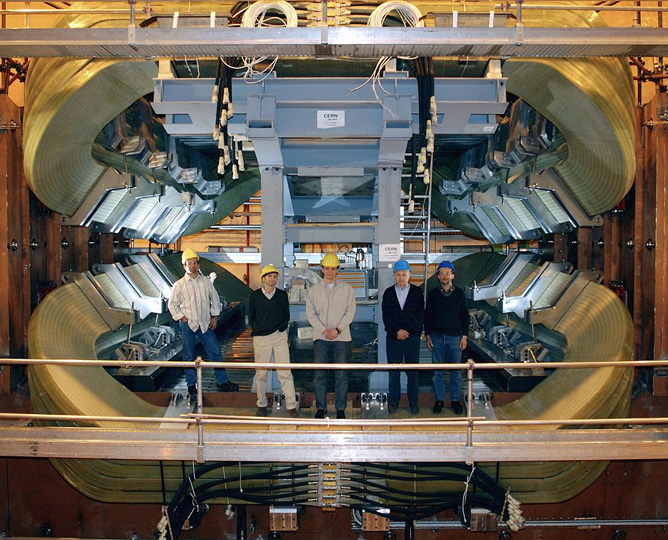To help identify the explosion of particles produced when protons are smashed together, particle detectors typically include a powerful magnet. LHCb is no exception. The experiment’s enormous magnet consists of two coils, both weighing 27 tonnes, mounted inside a 1,450 tonne steel frame. Each coil is constructed from 10 ‘pancakes’, wound from almost 3,000 metres of aluminium cable.
Particles normally travel in straight lines, but the presence of a magnetic field causes the paths of charged particles to curve, with positive and negative particles moving in opposite directions. By examining the curvature of the path, it is possible for scientists to calculate the momentum of a particle and thus establish its identity.

